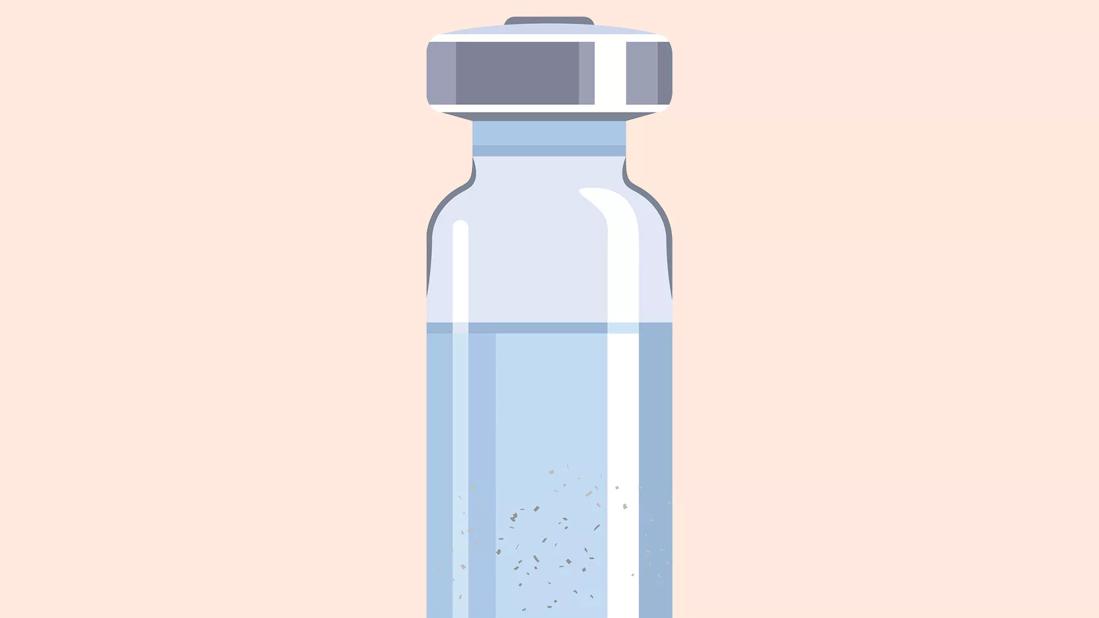Learn about its benefits, uses and side effects, including its ability to turn your skin blue

Colloidal silver’s use as a health remedy is a tale as old as time. But modern scientists continue to question its silver bullet status. That’s why internal medicine specialist Melissa Young, MD, says people need to be cautious when deciding to use it.
Advertisement
Cleveland Clinic is a non-profit academic medical center. Advertising on our site helps support our mission. We do not endorse non-Cleveland Clinic products or services. Policy
“You should not take it internally — swallowed as an over-the-counter supplement — under any circumstances,” says Dr. Young.
So, is colloidal silver safe in any form? Dr. Young talks about colloidal silver’s uses, benefits and potential side effects — from turning your skin blue to harming your internal organs.
Colloidal silver is a solution of tiny silver particles suspended in a liquid base. And it’s the same silver as the metal — the kind you find on the periodic table of elements or in your jewelry box. But instead of making bracelets and rings, many companies market colloidal silver as an essential dietary supplement or alternative medicine remedy.
Product labels promise the elimination of toxins, poisons and fungi. Even more than getting rid of stuff, manufacturers guarantee colloidal silver will give you an immune system boost. And some people even claim it’s an effective treatment for cancer, diabetes, HIV and Lyme disease.
Colloidal silver’s use as a health remedy goes all the way back to 1500 B.C. China. Ancient civilizations commonly used silver to treat a variety of ailments due to its antimicrobial properties. But once effective antibiotics came on the scene, colloidal silver fell out of favor until recently.
Advertisement
Today, people most commonly use it as a home remedy to treat colds and respiratory infections, says Dr. Young. They either ingest or gargle the liquid or inhale it using a nebulizer (a medical device that turns liquid into a breathable mist).
The U.S. Food and Drug Administration (FDA) warns that colloidal silver is more snake oil than magic bullet. The FDA has even taken action against companies selling the product as a cure-all.
They came out strongly in 1999 with this statement: “Over-the-counter drug products containing colloidal silver ingredients or silver salts for internal or external use are not generally recognized as safe and effective and are misbranded … products containing colloidal silver ingredients or silver salts are being marketed for numerous serious disease conditions and FDA is not aware of any substantial scientific evidence that supports the use of over-the-counter colloidal silver or ingredients or silver salts for these disease conditions.”
Translation: Colloidal silver is not FDA-approved. There is no proof it can treat any diseases.
Scientists don’t fully understand how colloidal silver works in your body. But the key to its reputation as a microbe killer starts with the mixture itself. When silver encounters moisture, that moisture sets off a chain reaction, which ends with the silver particles releasing silver ions. Scientists believe the silver ions then destroy bacteria by damaging proteins on their cell membranes, or outer walls.
Cell membranes are barriers that protect the inside of a cell. When they’re intact, nothing comes into the cell that’s not supposed to. Damaged proteins make it easier for silver ions to pass through the cell membrane into the bacteria’s interior. Once inside, the silver wreaks enough havoc to cause the bacteria to die. The size, shape and concentration of the silver particles in the liquid solution determine how effective this process is. However, some studies show that bacteria can develop a resistance to silver.
But one problem with silver as a bacteria killer is that silver ions don’t discriminate. A cell is a cell is a cell, so your healthy human cells may be at risk for damage as well.
“There’s potential harm with the internal use of colloidal silver,” says Dr. Young. “The silver could enter your healthy cells and cause them to die, just like they cause bacteria to die. However, some studies say colloidal silver may benefit minor skin wounds or burns.”
Manufacturers sell colloidal silver as a spray or liquid. Product names vary, but you’ll most often see these names on the store shelf:
How much colloidal silver each product contains depends on the manufacturer. Most range from 10 to 30 parts per million (ppm) of silver. But even this concentration may be too much. That’s because it would be easy to exceed the unsafe dose limits set by the World Health Organization (WHO) and the U.S. Environmental Protection Agency (EPA).
Advertisement
The WHO and EPA base these limits on the development of serious colloidal silver side effects like skin discoloration — not the lowest dose that could lead to harm. So, even if you stay below the “unsafe dose limits,” you could still cause injury to yourself, though you may avoid the most serious side effects.
The answer is a firm no if you want to take it internally, says Dr. Young.
“Just because something is an over-the-counter herb or supplement does not mean it’s safe. Not only did the FDA warn against using colloidal silver internally, but the National Center for Complementary and Integrative Health also says it can cause serious side effects,” says Dr. Young. “You should avoid it. It can cause harm, and there isn’t any strong scientific evidence that it is effective.”
Potential side effects of taking colloidal silver internally include:
Advertisement
The bottom line: Never take colloidal silver internally, as it isn’t proven to be effective or safe. But if you want to use it on your skin, first get your doctor’s advice. Some doctors use silver-containing medicines to fight infections, such as conjunctivitis. Manufacturers also add silver to some bandages and dressings to help people heal faster.
“Colloidal silver’s benefits may extend to minor infections, irritations and burns when put on the skin,” explains Dr. Young. “Silver’s antimicrobial effect can help prevent or treat an infection. But if you see the affected area becoming red or inflamed after using colloidal silver, stop using it and seek medical attention.”
Colloidal silver manufacturing is like the Wild West, with few rules and oversight, so you really don’t know what you’re buying. Stay safe by following your doctor’s guidance.
Advertisement
Learn more about our editorial process.
Advertisement

These terms are becoming outdated as providers turn to an ‘integrative’ approach instead

This supercharged oxygen treatment is unregulated and may do more harm than good

This alternative medicine is based on the premise that diluted ingredients will treat symptoms

Both can help reduce pain, but they’re very different in terms of origins, philosophies and practices

Beyond smelling great, essential oils can also help improve your health and mood

The flu, RSV, COVID-19, pneumonia and more typically circulate during cold weather months. I added this change

Type 2 diabetes isn’t inevitable with these dietary changes

Applying a hot or cold compress can help with pain